Key takeaways
- The types of barcodes can be categorized into linear barcodes, also called one-dimensional (1D), and two-dimensional (2D) barcodes.
- 1D barcodes include formats like UPC and EAN. These barcode types are commonly found on retail products. They are read horizontally and can store up to 85 characters.
- Examples of 2D barcodes are QR codes and Data Matrix codes. They can store more information than 1D barcodes and are readable both horizontally and vertically. These are commonly used to encode website URLs.
- Selecting the appropriate barcode type depends on factors such as the amount of data to encode, the size of the item, and the scanning environment.
- To start using barcodes, you will need barcodes, barcoding software, a barcode printer, and a barcode scanner.
It’s no secret that barcodes are a massive part of our daily. We see them on products in grocery stores; restaurants use them to display their menus, and so on. To the uninitiated, however, all these barcodes are likely just that: barcodes. So, it may come as a surprise to hear that there are many different types of barcodes. There’s Code 128, UPC (Universal Product Code), data matrix, QR code, etc.
Many of these barcodes have overlapping uses, but for the most part, each one fulfills a different purpose. So, how many different barcode types are there? How do they differ from one another? Should your business be using a specific type of barcode? We’ll be answering these questions today, along with a few others.
Different types of barcodes
The different types of barcodes fall into two main categories. One-dimensional (1D, also known as linear) or two-dimensional (2D). To us, they don’t look much different. They’re all just seemingly random collections of stripes, dots, squares, and potentially other symbols. But to computers, there’s a big difference.
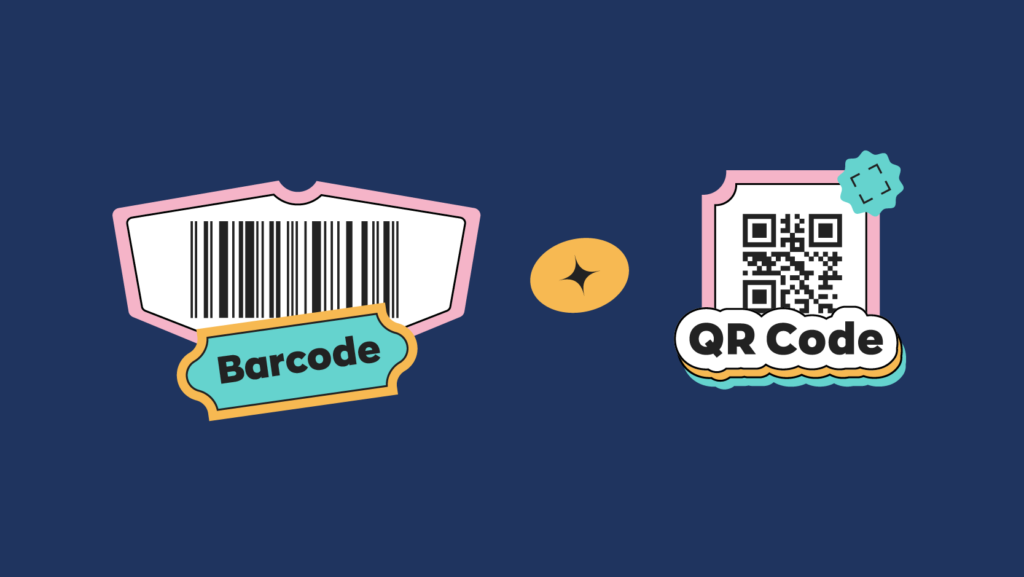
1D barcodes
Most people probably think of these types of barcodes when they hear the term “barcode.” These vertical black and white stripes are present on almost every retail product out there. We call these 1D barcodes because they only read horizontally. This type of barcode can store up to 85 characters. Here are some of the most common 1D barcodes.
UPC
UPC stands for Universal Product Code. Retailers around the world use these to track sales and shipping. While they are used worldwide, they’re more common in the United States. There are two variants of this type of barcode. The UPC-A variant of these types of barcodes can hold up to 12 alphanumeric characters. The UPC-E only holds 6 characters. UPCs can be purchased from GS1 and will be recognized globally.
EAN
For the most part, EANs are similar to UPCs. Businesses around the world use them on their products, much like UPCs. What sets them apart is location. While US-based companies usually use UPCs, Europe-based businesses make up the bulk of EAN users. Like UPCs, EANs also have two variations: EAN-13, which holds 13 digits, and EAN-8, which holds 8. Just like UPCs, you can purchase these barcodes from GS1.
Code 39
This type of barcode is advantageous since it contains both numbers and letters. The automotive industry and certain government facilities– like the US Department of Defense, use the Code-39 barcode. The name “Code-39” comes from the fact that, initially, it could only hold 39 characters. However, recent versions can store up to 43. The one caveat to remember with code 39 barcodes is that they are only useful within an organization.
Code 128
The shipping and logistics industry commonly use code-128 barcodes. These barcodes can store up to 128 characters from the American Standard Code for Information Interchange (ASCII) character set. The most significant advantage of these types of barcodes is their large data density, which makes them much more versatile than code 39. However, much like code 39, these types of barcodes are only useful within your company.
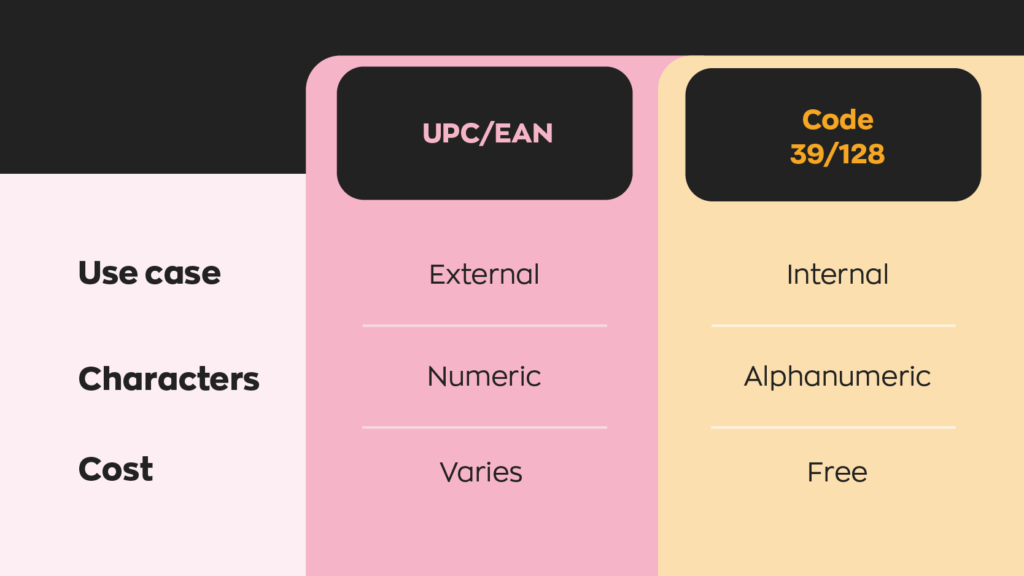
2D barcodes
Even if you’ve never heard of a 2D barcode, chances are you probably use them often. QR (quick response) codes, for example, are a type of 2D barcode. 2D barcodes use more than just stripes to store data. They use a combination of stripes, squares, hexagons, and other symbols to store data. We call these 2D barcodes because they store information both horizontally and vertically. They also require a 2D imager to read. That sounds scary (and expensive), but it’s actually very accessible– most modern phones these days include a 2D imager. 2D barcodes can hold up to 7,089 characters. Here are some of the most commonly used 2D barcodes.
QR Code
The QR code is the most commonly used 2D barcode. This is because they’re open domain– free for anyone to create and use. Businesses can use them for all sorts of reasons. Marketing teams, for example, put them on flyers, billboards, video ads, and even magazines. They have a high tolerance to error, which makes them popular, but a laser cannot read them.
Data Matrix
Data matrixes look similar to QR codes but are generally smaller in size. Their tiny size makes them ideal for placement on small products, and the logistics industry often utilizes them. Their design makes them machine-legible in low resolution, making them ideal for hard-to-scan positions.
Aztec
Airlines commonly used Aztec barcodes for boarding passes. Unlike other barcodes, these don’t require a blank space around them. They can also hold massive amounts of data and have better information correction than other 2D barcodes.
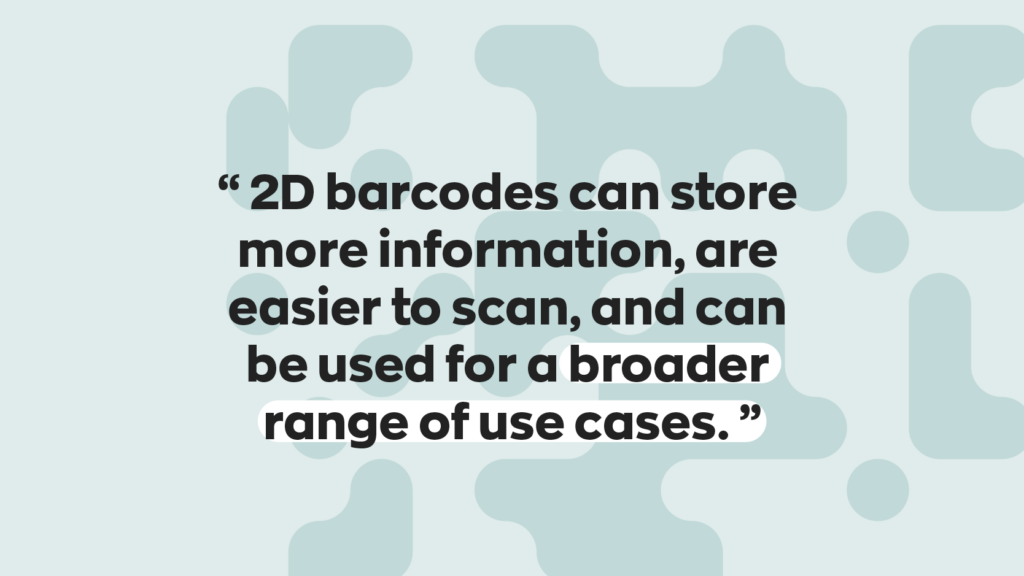
Which type of barcode should your business be using?
Some industries have standardized the use of a specific type of barcode. There can be a few reasons for this. Some niche products only have room for a particular type of barcode, and others may need to be read under poor conditions. Whatever the industry, be sure to research the standard practices beforehand.
Another huge factor affecting which type of barcode you should use is whether or not you need an outside organization to recognize them. We mentioned this briefly above, but you can purchase UPCs and EANs from GS1, a non-profit organization responsible for standardizing many processes worldwide. We even partnered with GS1 to make it easier for our customers to purchase these barcodes from our inFlow GTIN Barcode Shop commission-free. This means you pay the same whether you buy them from us or directly from GS1.
When implementing barcodes, remember that they store information, not just product information. You can use them in many different ways with a bit of creativity. For example, you can place larger barcodes on shelves and store information for every product present. Companies needing asset tracking can put them on equipment to keep track of them while they’re on the move. The possibilities are endless.
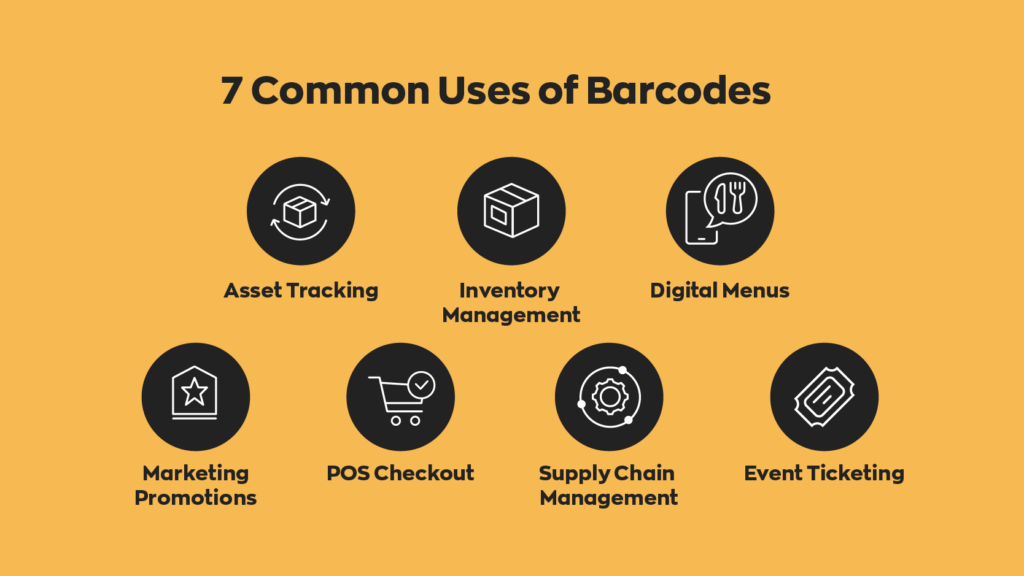
What do you need to start using barcodes?
If you want to implement barcodes into your business, you’ll need four things for a fully functional barcode inventory system.
- Barcodes – This one is pretty obvious, but it’s worth mentioning that how you get your barcodes may vary depending on the type of barcode you’re using. If you need UPCs or EANs, you will need to purchase those. You can create code 39 or 128 simply using a barcode font or barcode generator. The choice is yours.
- Printer – Once you have your barcodes, you’ll need to print them. Any printer will do for this, but we recommend a label printer if your budget allows.
- Scanner – Now that you have labeled your inventory and assets with your barcodes, you’ll need a way to scan them. Luckily, a modern smartphone can do the trick if you’re short on cash. But if you’re doing a lot of scanning, you should consider getting a dedicated laser scanner. These come in many shapes, sizes, and price points, so it’s best to research to ensure you get the best one for your needs. We may be biased, but we always recommend our inFlow Smart scanner.
- Barcode Software – This one is often overlooked when people think of barcodes because most people think the information barcodes hold is in the barcodes themselves. In reality, without a database that stores the information, barcodes are just a collection of numbers and characters.
So, if barcodes are something that can help your inventory management, consider giving inFlow a try. We made our software with barcodes top of mind. You can generate 1D and 2D barcodes, design labels, print them, and scan them all right inside inFlow!


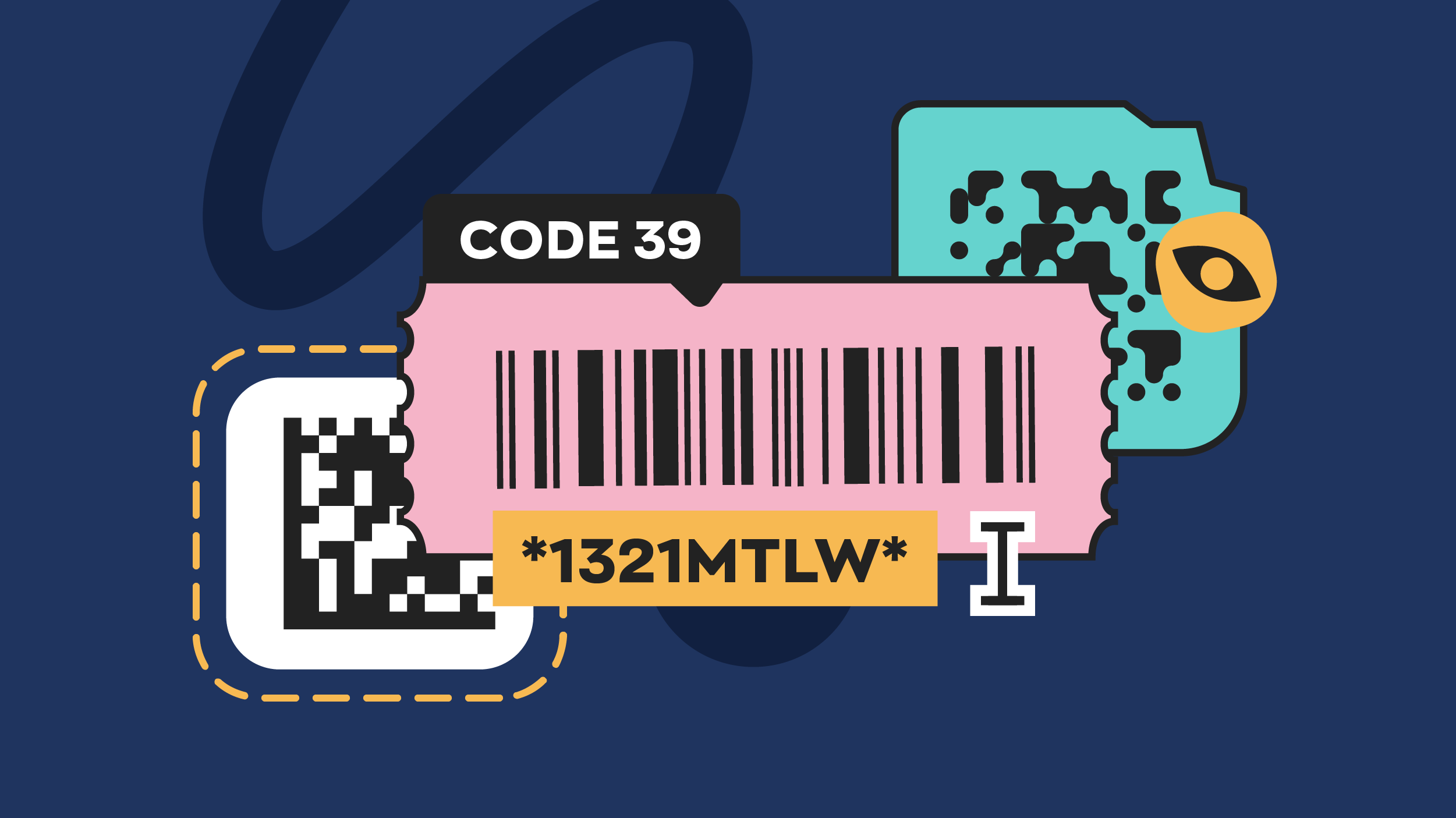
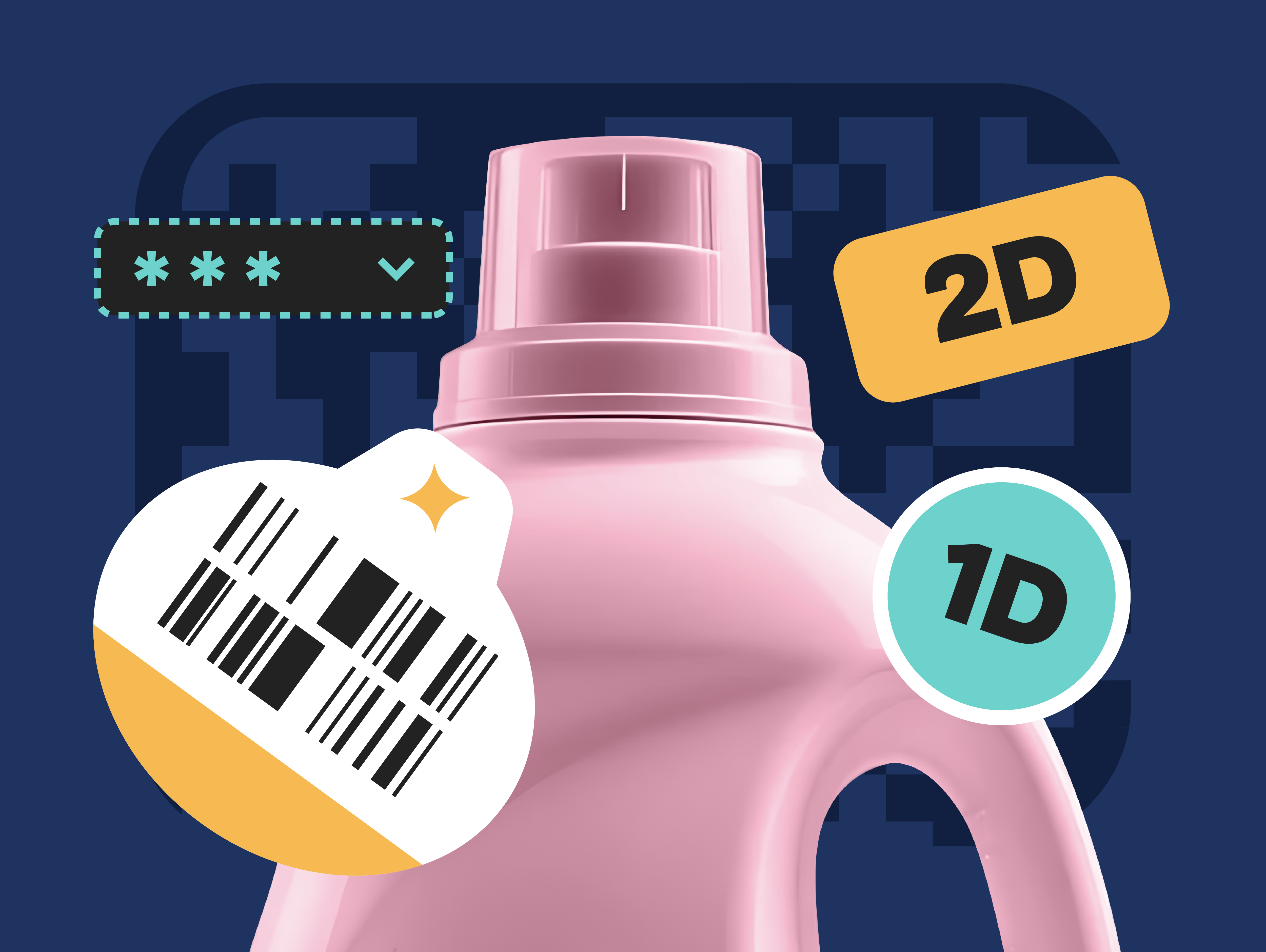
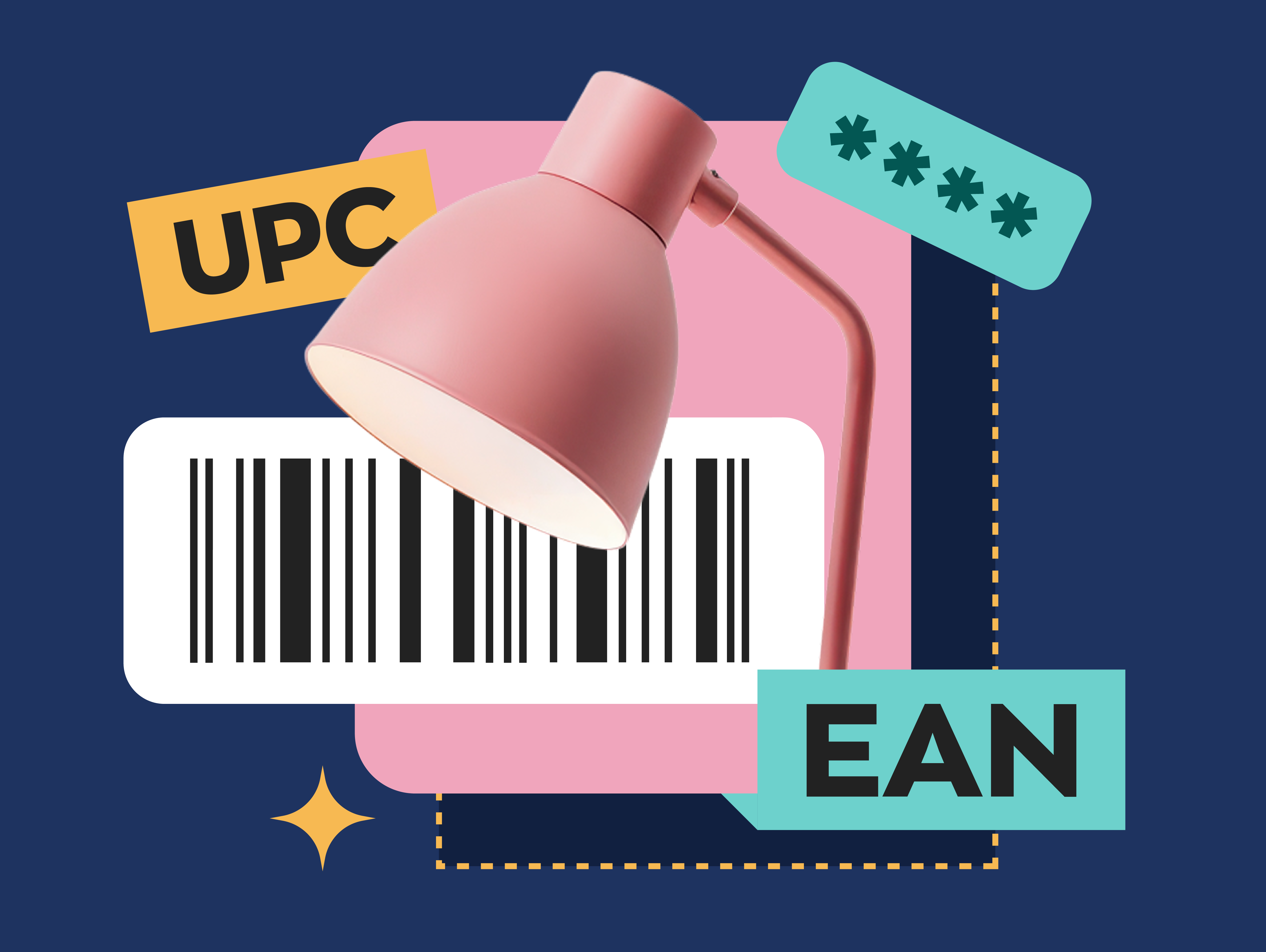
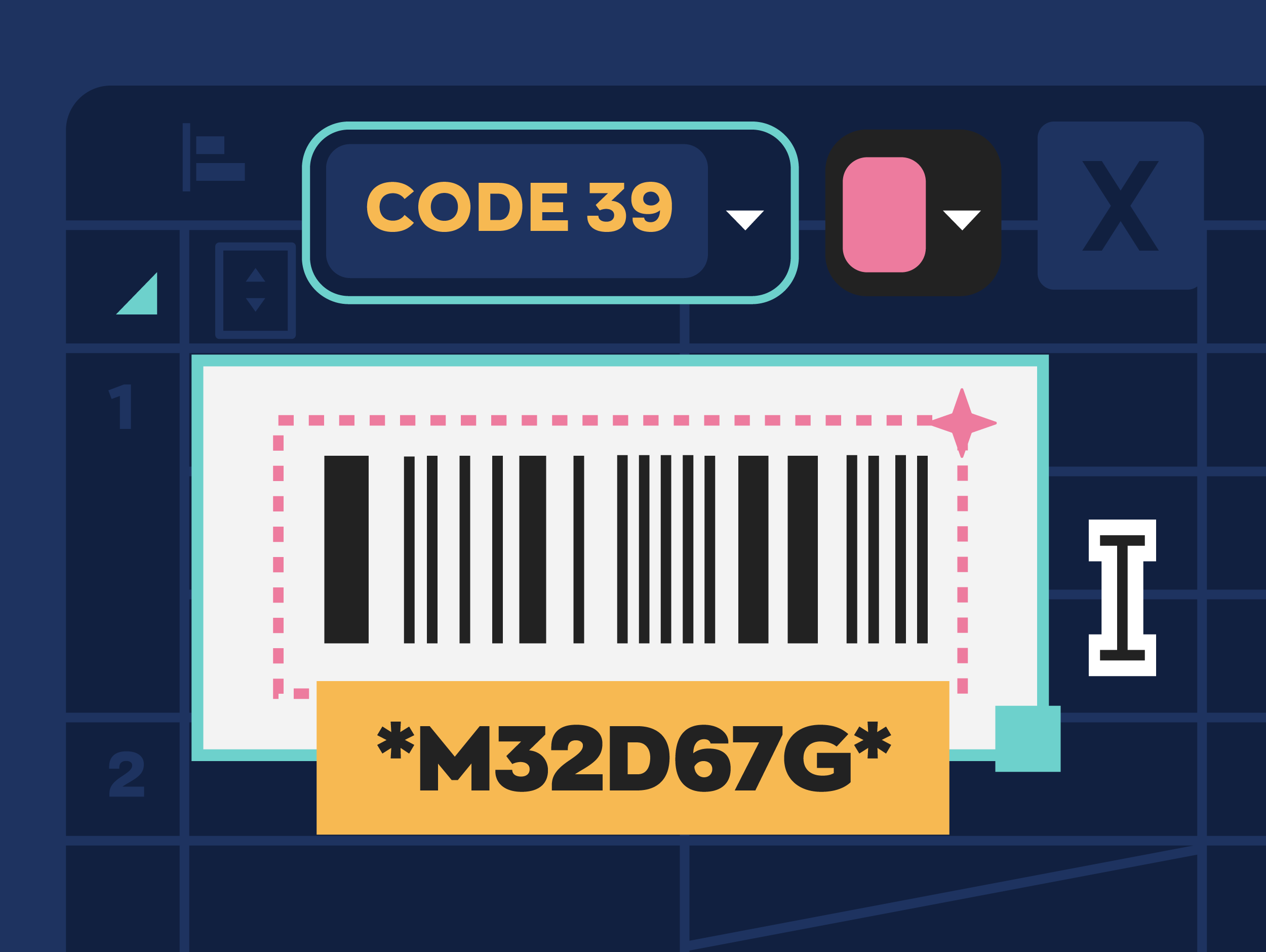
0 Comments